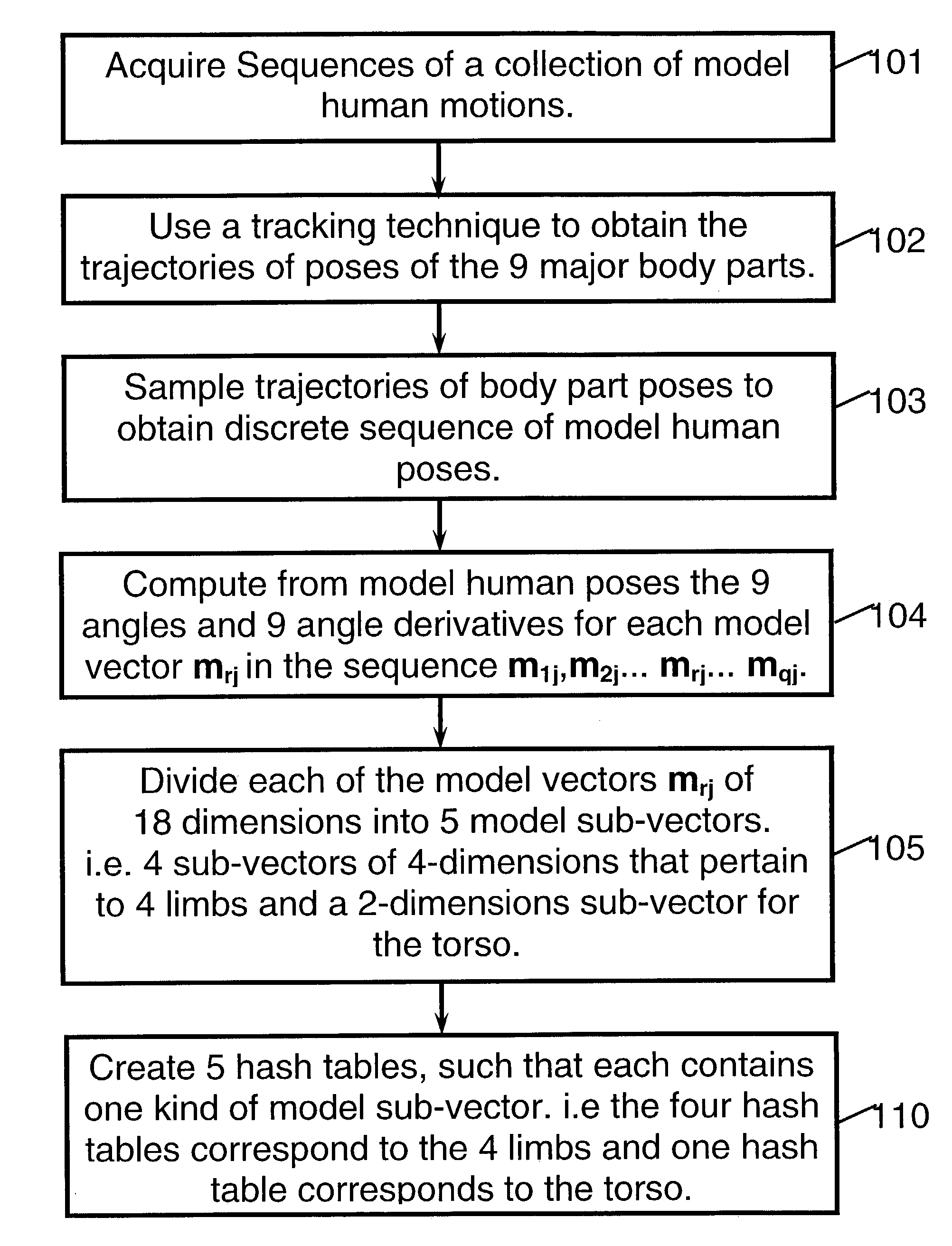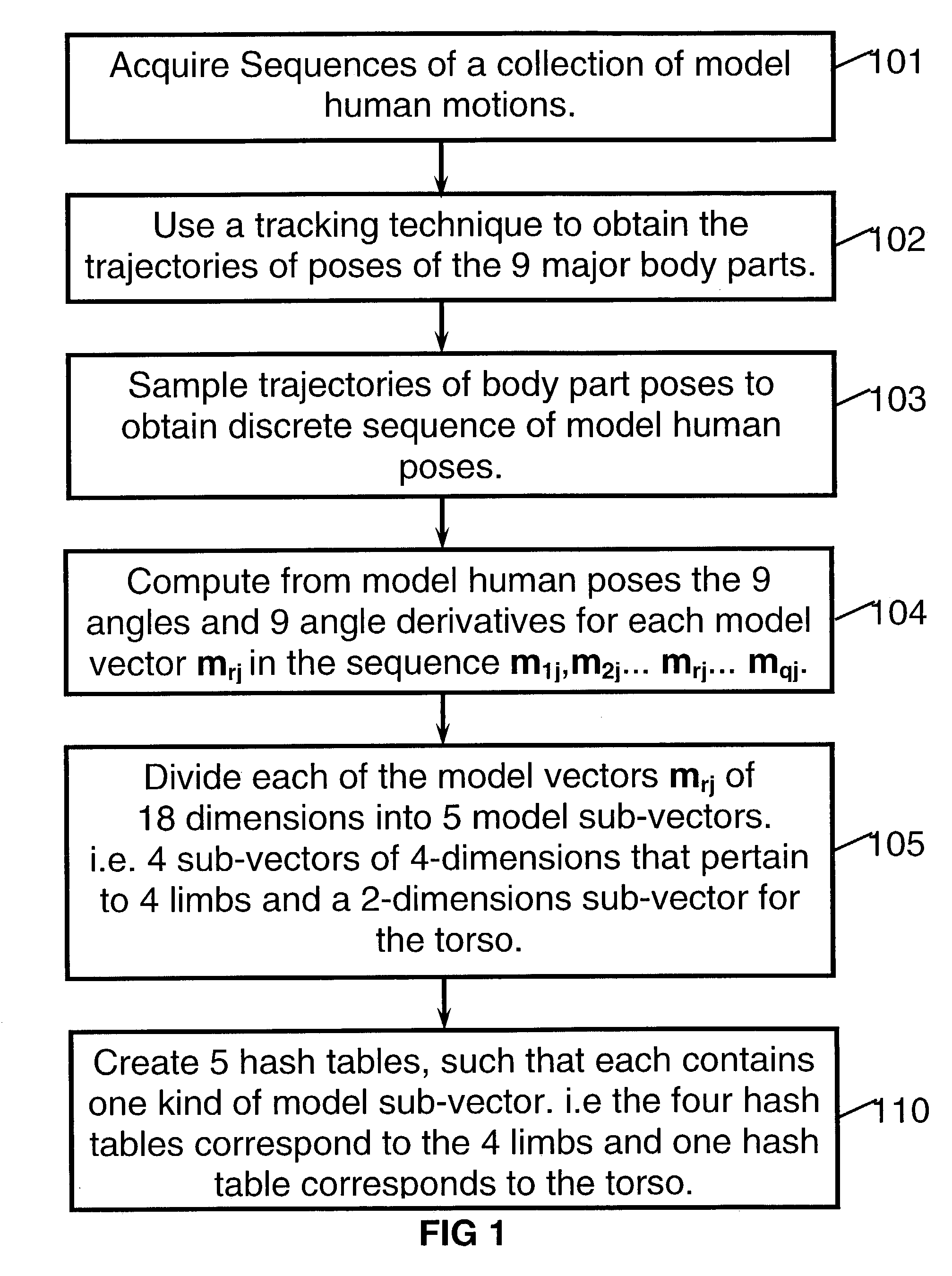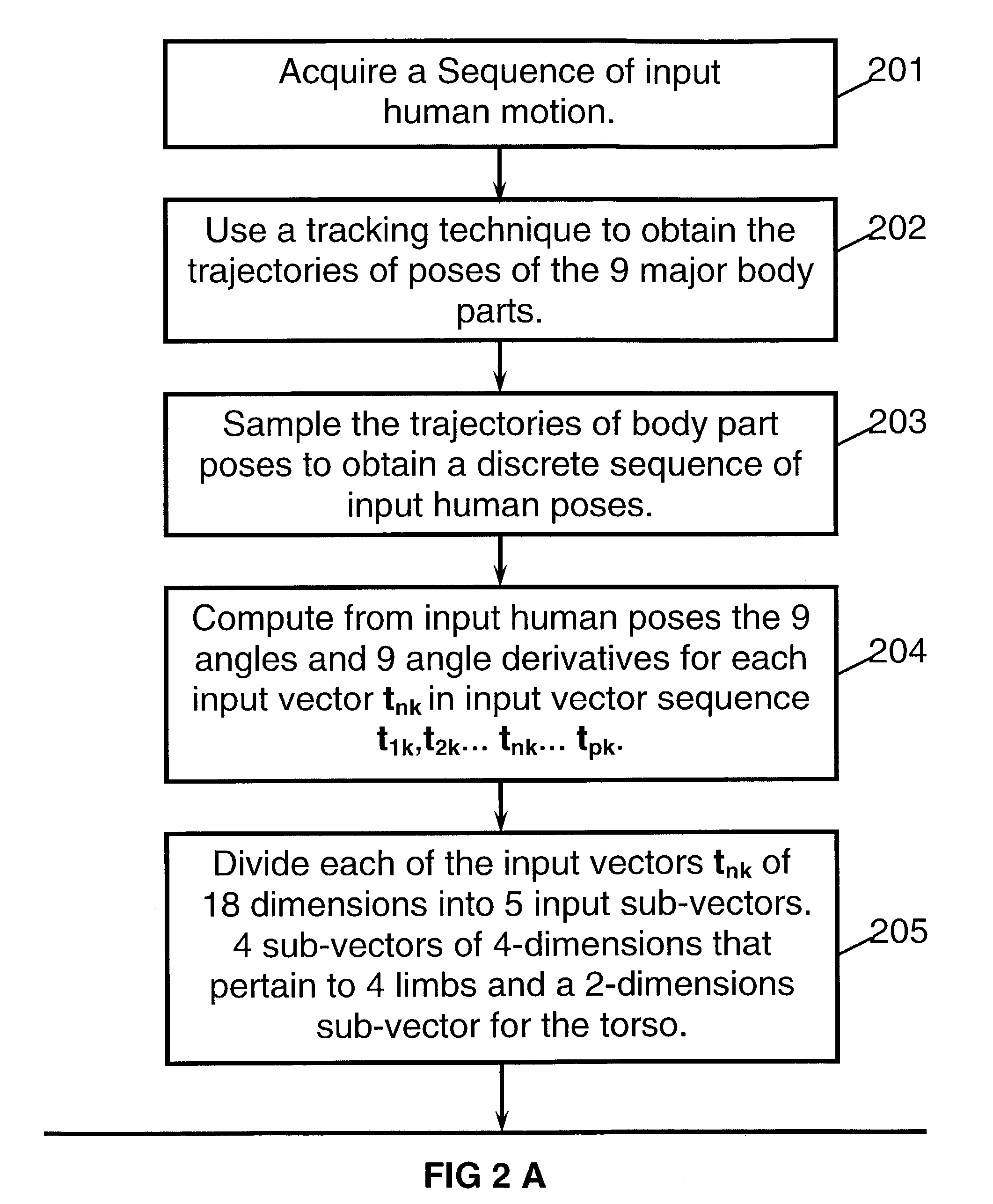Method of recognition of human motion, vector sequences and speech
a vector sequence and human motion technology, applied in the field of human motion recognition, can solve the problems of large variation of speed, prior art fails to provide satisfactory solutions, etc., and achieve the effect of robust recognition of human motion, low probability of errors, and low cos
- Summary
- Abstract
- Description
- Claims
- Application Information
AI Technical Summary
Benefits of technology
Problems solved by technology
Method used
Image
Examples
Embodiment Construction
[0033]This invention is mostly focused on methods for recognition of human motion. However, similar methods are also proposed for other applications that include speech recognition and recognition of vector sequences per se.
[0034]Hence, a major objective of the invention is to recognize inputs of human motion and to classify each one of these inputs as most similar to one member of a collection of stored model human motions. The manner of acquisition of the motions does not perturb the principles of the invention. Human motion can be measured and tracked by a large variety of systems and sensors. Depending whether these systems are attached to the subject's body or is installed in the subject's environment, these systems can be classified as internal or external. Examples of external measurement systems are 2D or 3D video, optical tracking of markers such as infra-red or LEDs (light emitting diodes), gravitational or inertial sensors, electromagnetic sensors and others. Examples of ...
PUM
 Login to View More
Login to View More Abstract
Description
Claims
Application Information
 Login to View More
Login to View More - R&D
- Intellectual Property
- Life Sciences
- Materials
- Tech Scout
- Unparalleled Data Quality
- Higher Quality Content
- 60% Fewer Hallucinations
Browse by: Latest US Patents, China's latest patents, Technical Efficacy Thesaurus, Application Domain, Technology Topic, Popular Technical Reports.
© 2025 PatSnap. All rights reserved.Legal|Privacy policy|Modern Slavery Act Transparency Statement|Sitemap|About US| Contact US: help@patsnap.com



